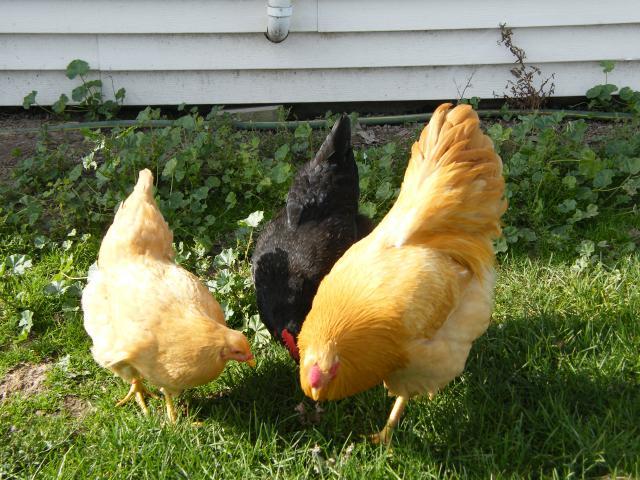Quote:
ORIGIN OF MY BUFF CHANTECLER STOCK
BY WALTER FRANKLIN (1985)
When I retired, we took up our search for the ideal farm chicken. This bird must be rugged and vigorous enough to live and grow, on range or in confinement, under widely varied conditions of housing and climate. The hens must be year-around layers, satisfactory mothers, and top quality meat birds. This last requirement will eliminate varieties with dark pinfeathers. White birds are attractive while they are white. If conditions are not ideal, they show dirt or soiled easily. They seem more susceptible to cannibalism and feather picking than colored birds. White birds are also prime targets for predators because of their high visibility. Buff appeared to be the answer to our color problem. Buff pinfeathers or feather residue blends best with yellow skin color, so buff birds dress out well. Buff birds are less conspicuous than white, when predators are prowling.
Buff Rocks,Wyandottes, or Orpingtons can be fine layers and meat birds, but they have a lot of trouble from frozen combs and wattles in severe winter weather. The Chanteclers, seemed to have the closest to frost-proof combs and wattles of any dual-purpose breed. They are also good layers and meat birds. They were not available in buff, however. Those who know poultry history told me that Buff and Black Chanteclers were bred at one time, but never made it into the Standard. We could not find any Chanteclers, but the Standard told what crosses were used to make the first Chantecler varieties. I decided to try a somewhat similar plan, using buff breeds.
About 1977,we crossed Buff Cornish and Buff Wyandotte large fowl. The next year, we mated a Buff Rock male to our cushion combed Cornish Wyandotte pullets .The following year, the pullets from this latest cross were mated to a couple of their mothers brothers .By crossing and back-crossing among these three breeds (so that propagation could continue without too much close inbreeding), and selecting for type as depicted. in the Standard, we have obtained Buff Chanteclers.
Their eggs are medium brown, of good size, and these Buff Chanticleers are excellent meat birds. They lay well and are close to the Standard in type and color. We feel that they are the best all-purpose breed and variety, for the farm or backyard flock, and in the show room.
We decided a couple of years later, to try and make Chantecler bantams using the same method followed in the development of the Standard Chantecler.This was a little more difficult for the Buff Chantecler bantams than for the White or Partridge varieties. There were no Buff Cornish bantams around to use, so we used White Cornish bantams, along with Buff Wyandotte and Buff Rock, in bantams. Some of our Buff Chantecler bantams still want to sport a bit of white among their buff wing and tail feathers. Careful breeding should soon make this a rarity, we hope. We have been trying to make Buff Cornish bantams out of the Buff Chantecler bantams that come with pea combs. We are still a long way from home on this one; some are getting fair color and passable combs. The heavy bone and body type just arent there yet. I tried crossing a White Laced Cornish bantam on these Buffs this year, but the color does not look too promising.
Editors note: I met Walter Franklin and saw his birds at a show in Nov.1985. Walter had Buff, White, and Partridge Chanteclers in both Standards and bantams that he made from scratch in each. They were all well made and I was impressed with the Buff Chantecler large fowl. I feel they deserve to be a Standard of Perfection variety, I understand they are working on getting them admitted. I liked the cushion comb, and think it looks nicer than either a rose comb or a pea comb. My guess on the origin of Buff Chanteclers, was a Buff Cornish - White Chantecler cross. Walter wrote the above article at my request to more fully explain his work. The buff color looks splendid on the Chantecler type and cushion comb. D.J.Honour (1986).








